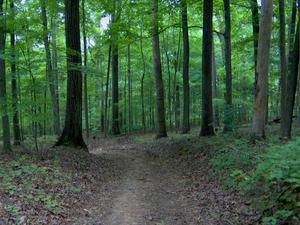Helping You Manage Your Natural Resource Responsibly
Call True North
Mobile: 919-815-3468
Hardwood Managment
Hardwood Management
Hardwood forests as a whole have been poorly managed in the southeast. It has been estimated that a typical hardwood site of mixed species is growing at a disappointing rate of about 1 cord per acre per year and that that growth is not always on quality trees.
Most hardwood stands have been formed through a rouge process of repeated high-grading in which select stems were removed, leaving stands consisting of undesirable trees with poorly balanced stand age and size class distributions.
Managing for hardwoods requires a keen understanding of how a natural stand of hardwoods evolves and how different hardwood species react to changing conditions and treatments. Hardwood trees are much more site demanding than pines.They also take 80 to 100 years or more to grow, which is significantly longer than most pine species.Managing for quality hardwoods requires the expertise of a professional forester with the knowledge of hardwood silviculture. Good site analysis, evaluation of present tree conditions, and technical expertise are critical to insuring good results.
There are a variety of timber stand improvement and management activities which can be used in hardwood stands to improve species composition and quality. Each of the approaches requires hands on attention in planning and professional expertise in applying the techniques.
There are a variety of timber stand improvement and management activities which can be used in hardwood stands to improve species composition and quality. Each of the approaches requires hands on attention in planning and professional expertise in applying the techniques.
Forest Practices Used to Develop Quality Hardwood Stands:
- Liberation
- Crop-tree Release
- Improvement Thinning
- Regeneration Harvest
Liberation
Management of sunlight is an important element in establishing and developing a new hardwood forest. Many hardwood stands that have been clearcut are not true clearcuts. Many small stems, sometimes as large as 4 to 8 inches in diameter, are left standing. These residual stems consume valuable growing space that the regenerating stand could better utilize.
These small residual stems often have poor form, are less preferred species, have sustained damage during logging operations and have little future value. Liberation is simply the "felling" or removal of all residual trees from the former stand. This permits full sunlight to reach new trees. Liberation cutting permits the development of new tree reproduction without the overhead competition.
Crop-Tree Release
Crop-tree release is preformed in young hardwood stands before they reach commercial size. The purpose of crop-tree release is to focus an early growth advantage to selected trees by reducing adjacent competition. This is usually done when the stand is between 15 and 20 years. Crop tree release is usually preformed on about 30 to 75 trees per acre, spaced as evenly as possible. Once trees have been identified, the trees that are in direct competition with the crop tree are felled or killed with a selective herbicide to allow the crop tree to expand its growing space.
Through the natural process a hardwood stand will self thin itself and it will gradually reduce its stocking to a few hundred trees per acre over time, but there is no control over which trees become the mature stems. Crop-tree release identifies key crop-trees early on in the development of the stand. Crop-trees are usually selected for their timber value, wildlife value or aesthetic value.
Improvement Thinning
Improvement cuts are done in mature stands to improve the overall quality of the stand. Unlike earlier practices, financial income can be gained from forest products removed. Tree that are removed during the improvement thinnings are usually the smallest and most poorly formed trees so that the most desirable trees can fully utilize the site. Improvement thinnings can be repeated at 10 to 15 year intervals and over time will remove higher quality trees.
It is very important during thinnings that residual trees are not damaged and that the stand is not cut too heavy. Hardwood stands that are thinned too heavily may encourage the development of epicormic branching and lower the quality and grade of your residual stand. Improvement thinnings need to marked by a professional forester and not left up to logger to select trees for removal.
Regeneration Harvest
At some point in time your high value hardwood stand should be harvested and marketed wisely to maximize financial returns. There are also some times when a hardwood forest is of such poor quality that leaving it to grow will not increase its value over time. In that case a regeneration harvest is necessary to regenerate a new forest.
But, prior to any final harvest of hardwoods provisions must be made to successfully regenerate the next forest. Most times, it is not adequate to just cut and leave it to grow back. With hardwoods it is important to plan well in advance for regeneration. This means implementing a regeneration plan often years before the final harvest to insure adequate hardwood regeneration exist before the harvest is conducted. Applying techniques such as Shelterwood, weeding and cleaning, and small Group Selections will also promote the development of quality hardwood regeneration.
"An ordinary citizen today assumes that science knows what makes the community clock tick; the scientist is equally sure that he does not. He knows that the biotic mechanism is so complex that its workings may never be fully understood. –Aldo Leopold, A Sand County Almanac (1949)"
True North Forest Management Services
Helping You Manage Your Natural Resource Responsibly

